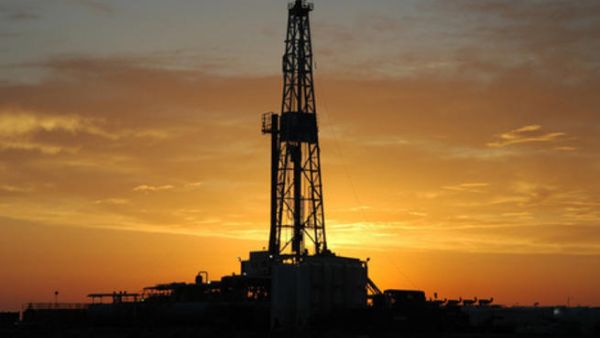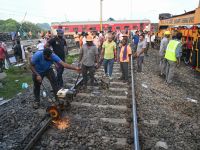Across the globe there are almost 2,000 major oil and gas projects identified as live or due to go live in the next three years, with a significant number located across the Middle East region. The total capital expenditure value of these projects is estimated to be in excess of $2.5 trillion and when all of these assets come into use they will require a massive annual expenditure to operate and maintain them. According to some analysts maintenance costs alone are likely to come in at more than $0.75 trillion over the next 20 years. In more basic terms, this figure is the equivalent of $125 from every person on the planet. Given the level of investment being mooted here it is of paramount importance that this capital is used as efficiently as possible and delivers the maximum return on this investment. Whilst most oil and gas operators understand the importance of minimising their Capex spend less attention is given to limiting the cost of operation of their assets. However, by looking at the key factors that affect operational costs, inefficiencies can be identified and tangible improvements made through the application of the correct processes during both the Capex and Opex phases.
Operational Expenditures:
The size of the overall Opex cost is largely determined during the pre-Feed and Feed (front end engineering design) stages. With most engineering, procurement and construction (EPC) contracts the aim is to keep overall life cycle costs of the asset to a minimum without underplaying issues including performance, operational efficiency, sustainability, public image, time to delivery, and optimal specification. However, many operators find that as completion deadlines draw near, pressure to ‘get the project signed off!’ can see decisions taken that result in a legacy of unnecessarily high Opex costs for the lifetime of the asset. Given that many of these assets can be in operation for over thirty years, this haste to push the project through can very easily become an expensive mistake.
Operational cost = quantum of work x efficiency x rate: The operational expenditure for a facility such as an oil refinery or offshore production platform is principally dictated by three prime factors: the quantum of work carried out on the asset, the efficiency at which it can be delivered and the agreed cost rate of the resource used here. In each case by focusing on Opex issues including maintenance strategies, work planning and scheduling and contract and commercial management strategies, there is an opportunity to significantly reduce cost outlay. Whilst all of the issues previously mentioned may appear to be distinct, they do in fact have complex inter-dependencies. For example, the technical design and degree of equipment redundancy impacts on the maintenance strategy which in turn impacts on the skills required to maintain the facility. This in turn impacts on the contracting strategy employed – can the equipment be maintained by staff or are specialist contractors required?
In order to minimise life cycle costs, all of these aspects of Opex costs need to be considered during the Feed stage for if they’re not factored in at that juncture, operators will find themselves in a situation akin to trying to catch a handful of sand. Whilst they may be able to plug some holes, the reality is that some cost inefficiencies will inevitably slip through their hands.
Ensuring the maintenance strategy is aligned with asset criticality is fundamentally important: Typically, maintenance costs comprise 20-30 percent of total Opex costs so in terms of driving efficiency savings, this is an obvious area for operators to focus their attention. Normally maintenance plans for new facilities are provided by the EPC contractor and they are usually based on the Original Equipment Manufacturer’s Operations and Maintenance (OEM OandM) manuals. Whilst this ensures that warranty conditions are complied with, and the experience of the manufacturer is utilised, it usually misses two key points: Firstly, these recommendations often overlook the operating context of the equipment including the location of the asset, the operating regime and the type of product being used. This is important because the approach in the Arabian Gulf will obviously need to be different to the approach in the North Sea. Similarly, when it comes to the Alberta tar sands or the Arctic exploration projects, the technical assets required are very specific so a ‘one size fits all’ approach is not going to work; and Less attention is given to limiting the cost of operation of oil and gas assets. More importantly, the recommendations from OEMs do not take into account the criticality of the asset when it is installed in the facility.
To achieve optimal cost/performance balance, the maintenance regime adopted for a pump that is crucial to the production process with no standby and long lead time for replacement, will quite evidently need to be very different to that employed for a less critical pump with a standby replacement. By failing to consider asset criticality, many organisations adopt an overly expensive maintenance regime resulting in higher Opex costs, whilst also potentially under-maintaining highly critical assets and creating a risk of production losses. The solution is to develop a technical maintenance strategy as an integrated part of the design process, during the initial Feed stage. To tackle the latter issue, operators need to develop a clear understanding of how critical each asset both from a safety perspective but also from other factors including production or delivery, to ensure the appropriate level of maintenance analysis is undertaken. With many operators unclear on the role each asset plays, the first step will be to carry out some form of analysis to help classify each asset into distinct categories.
This criticality analysis can be completed using reliability block diagrams or a criticality algorithm based upon consequence banding. Once complete, the assets can be placed into their appropriate classification and the most cost effective maintenance optimisation can be activity completed. In terms of classifying each asset EC Harris advocates an approach called RD1 – Reliability from Day One – which groups each asset into one of the following three categories: vital, essential and auxiliary.
Vital assets: As the name suggests, vital assets are those that are considered highly critical to the continued safe and reliable operations of the asset. They are and are typically subjected to detailed analysis considering all relevant information. Essential assets: These are the items of equipment that, whilst not highly critical, are still important to the continued operations and which should be subjected to a similarly rigorous maintenance analysis. Auxiliary assets: These assets are those items of equipment which represent the least critical within the asset base and which are typically not critical to safety or production. An auxiliary item of equipment would typically not undergo a detailed maintenance analysis, but would instead be subject to the most cost-effective generic maintenance template which would help to save both time and money during the analysis process as well as ensuring that the most appropriate maintenance is applied. Overall, organisations tend to have fewer highly critical assets and more auxiliary assets and once this identification process has been completed, it is possible to start the selection of optimum maintenance tasks.
Depending on criticality, the balance between impact of failure and maintenance cost can result in very differing maintenance strategies. The overall objective however will be to tailor the maintenance plans to minimise Opex cost without impacting on the overall asset performance.
The Prize on Offer:
Those owners who focus on the issues that affect operational costs, and who implement the right processes during both the Capex and Opex phases, can see their assets deliver greater levels of return which will have a significant impact on their business’ bottom line. Some recent examples within the industry show the potential to make savings ranging from $10-40 million per year by focusing on just 20-30 percent of the assets where maintenance costs are unnecessarily high. When considered in these terms the prize on offer appears obvious and an area that offshore operators should focus on as the demand to supply oil to the global economy continues to grow.








